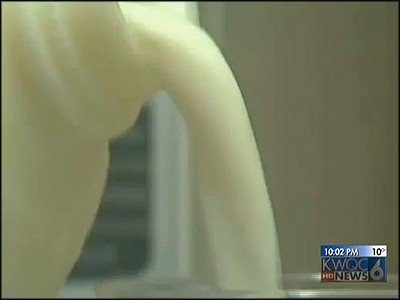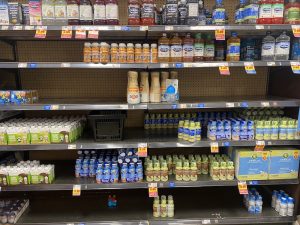Editorials from the heartland are growing increasingly pessimistic about the prospects of farm billpassage before Congress decamps for holiday break. And with the giant omnibus law back in the headlines — including the specter of $7/gallon milk, if the bill’s expiration automatically makes an old law kick in — you might want to dig around for a local angle.
Here’s a good NPR story on the milk angle, by the way, which explains that reverting to a 1949 farm bill would force the federal government to buy up milk, cheese and other dairy products, competing with consumers and driving up prices. Unlike the complex industry bargaining over crop subsidies and insurance which (food stamps aside) are the bulk of the hold-up in the farm bill, the effect on grocery prices is one many readers and business owners can relate to, and one you might localize.

Overall, the farm bill is so massive — here’s a link to all 1,163 pages via GovTrack and so fraught with political interests that it could be a full-time specialty beat in itself. I find, and you probably do too, that visiting it occasionally is difficult because even explanatory pieces and primers about sections of the bill tend to be produced by partisan organizations, lobby groups or trade associations, making it difficult to parse the truth. The U.S. Department of Agriculture also is in the political mix (it’s largely responsible for the $7 milk headlines) which contributes to the difficulty for objective reporters.
Unless you are entrenched in the agriculture or political beats, your best bet might be to find an ancillary topic. Here are a few ideas:
Farmland prices and farm ownership.
Agricultural land has been in hot demand in recent years but a number of outlets are reporting that prices are stabilizing or “softening” as this Reuters update about the recent Chicago Fed’s quarterly survey of farm bankers. MarketWatch is worried about a bubble, especially with the double whammy of rising interest rates and falling commodity prices; you might ask around among lenders and specialty real estate brokers what the trends are in your region.
An interesting Associated Press story said that an Ohio State University has debunked the notion of a looming demographics-driven farmer shortage, noting that farm wealth and income are at record levels, too. Here are the Census Bureau pages about farms and farmland if you need historical stats about farm ownership (private, corporate) and size.
Ripple effect on suppliers.
A number of reports suggest that uncertainty over their subsidies and insurance is causing farmers to hold back on everything from capital improvements to planting plans. You might check in with feed suppliers, seed suppliers, heavy equipment dealers, fertilizer sellers and other vendors to the farm industry (irrigation equipment? building supplies?) about how farmers’ uncertainty over future income support might be affecting the businesses that depend upon them.

(I would be on the lookout for politically slanted responses, here, as everywhere in this story and require documentation to support claims of sales dips and the like.) And of course, if you area is home to plants or headquarters of big multi-national equipment, chemical or seed suppliers you might ask about their stances as well; here’s an interesting Bloomberg story about the farm bill limbo’s effect on investing and research by giant DuPont.
Subsidy recipients.
I’ve written about this before but if you haven’t had a chance to take a look, the non-profit Environment Working Group offers a fascinating farm subsidy database so you can look up big recipients in your neck of the woods.
Conservation.
This editorial outlines some of the conservation issues related to farming, and here’s a helpful summary by the non-profit Intermountain West of some of the multi-billion provisions related to land, wildlife and habitat protection in the farm bills. You might check with conservation groups about the provisions most important to your region, or nose around for interesting small businesses engaged in the latest in conservation technology. Here’s an informational site on that topic from Purdue University.










